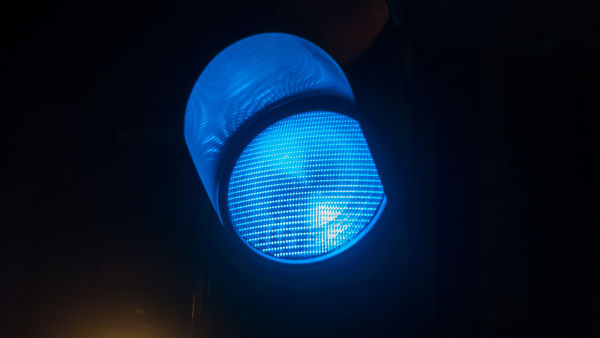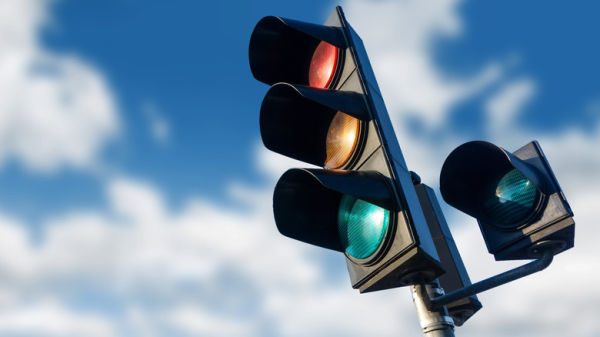If you’ve ever wondered how traffic lights work and how they can detect your car, you’ve probably also been curious about those small blue lights mounted above the signals themselves. These blue lights don’t change color, they don’t blink, and they’re not part of the usual red-yellow-green color scheme. While a new traffic signal routine isn’t coming, there is a specific reason these odd blue lights are showing up more often at intersections.
The blue light above a traffic signal, also known as a confirmation light, actually isn’t there for drivers at all. Instead, it’s for law enforcement. When the traffic light turns red, the blue light comes on too, letting police spot the change even if they’re not at the intersection itself. This allows them to keep an eye on things from side streets, parking lots, or wherever they’ve got a decent angle. Since the blue light turns on when the lights go red, it’s a lot easier to catch red-light runners without any guesswork.
While confirmation lights assist police in keeping the roads safe, they’re not tied to traffic cameras, as not all traffic lights have cameras. But if a cam is nearby and you blow through a stop signal when the confirmation light is on, you might just see a different blue light in your rearview mirror.
Blue lights atop traffic signals are becoming widespread
The exact origin of using blue lights, or confirmation lights, above traffic signals is unknown, though news of the system began popping up online in the mid-2010s. For example, the city of Gainesville, Florida, used white or clear lights before converting to blue LEDs sometime before 2016. Prairie Village, Kansas, installed its blue confirmation lights around 2017 to improve safety at crash-prone intersections. Bismarck, North Dakota, followed in 2018, outfitting most of its intersections to help police spot red-light violations from a distance.
These blue confirmation lights aren’t one-size-fits-all. Some sit above the lights, while others sit beside or even below them, depending on the junction’s layout. The positioning varies from city to city, based on what works best for the area’s design and enforcement needs.
White lights may also be returning to traffic signals at some point, though for a very different reason. Scientists at North Carolina State University have proposed adding them for autonomous cars. This new setup would tap into the system of a self-driving car, allowing it to communicate with other autonomous vehicles on the road and better manage traffic. But we’re not quite there yet when it comes to fully autonomous cars, and considering such a light system would need mass adoption from both automakers and governments, it’s perhaps not happening anytime soon.










